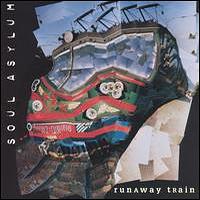How a Rock Band Helped Runaway Kids Find Their Way Home

Here’s some good news: in the United States, almost all of the children who are reported missing eventually return home alive. According to Reuters, “the recovery rate for missing children involved in the most dangerous cases in America [was] 97 percent in 2011” and if you include all missing children cases — not just the most dangerous — “more than 99 percent now return home alive.”
But that wasn’t always the case. Per the same article, as recently as 1990, only 62 percent of dangerous cases resulted in kids returning home safely. The reasons for the increase are attributed to a mix of factors, with “technological advances” being among that list. With the Internet and the ubiquity of smartphones, it’s not hard to see why. In 2014, for example, of the 186 AMBER Alerts issued, “154 cases resulted in a recovery, 52 of which were successfully recovered as a direct result of those respective AMBER Alerts being issued” according to an official report (pdf).
Before there were AMBER Alerts, though, we still had ways to share the photos and descriptions of missing children. Leading the way: milk cartons. Starting in 1984, many dairies donated one of the four sides of their milk cartons to help the National Center for Missing and Exploited Children locate missing children. The idea was, as the Atlantic quipped, “a clunky kind of push notification—one that you had to buy at the supermarket and keep in your fridge.” And while the milk carton campaign almost certainly raised awareness around the issue of missing children, it’s unlikely it was effective in locating them. There isn’t a lot of data here, but in 2010, an official from a nonproift focused on locating missing children told the Orlando Sentinel that “as many as 70 missing children were featured during the program’s brief run” but “of those, only one child was found alive.”
There was, however, a more successful way of getting the word out: rock music.
In 1992, the alternative folk rock band Soul Asylum came out with their sixth studio album, titled “Grave Dancers Union.” At that point, the group didn’t have any mainstream hits — while they had some singles appear on the Alternative charts, none of their songs had even appeared on the Billboard Top 100 list. That changed in June of 1993 when the band released “Runaway Train,” their fourth single from Grave Dancers Union. Runaway Train peaked at number 5 in the United States, made it to the top 10 in a half-dozen other countries (including #1 in Canada), and came in at #22 on the top songs in the U.S. for that year according to Billboard. It was a hit — and as a result, its music video got a lot of airplay.
The video, seen here, didn’t start like most others. At the top (in the U.S. — there were alternative versions for some other regions) was a message: “There are over one million youth lost on the streets of America.” And during the song itself, while the band sang the chorus, images of missing children appeared on screen, followed by the kids’ names in large, block letters. (If you click the video link, you’ll see the first such example at about the 1:05 mark.) Multiple versions of the video aired in the summer of 1993. In total, Soul Asylum, partnering with the National Center for Missing and Exploited Children, highlighted 36 missing children.
The campaign to located these children was a success. According to Rolling Stone, 21 of the 36 children were eventually located. (The video’s director, Tony Kaye, told Spin magazine that the number was 26.) Unfortunately, at least one of the children located was no longer alive. However, that is thankfully the exception; most of the stories had happy endings. Through this unique partnership, the band and the Center were able to reunite a number of families with their children.
In 2018, in honor of the video’s 25th anniversary, the National Center for Missing and Exploited Children and the band combined forces yet again. Enlisting other artists, the Center released a cover of the song with a new video on a stand-alone website, here. Using some of those technological advances, the video shows viewers pictures of missing children from their area, and the database is constantly updated to reflect newly missing kids.
Bonus fact: Using milk cartons to show missing people has become part of pop culture; as TV Tropes notes, “it has been parodied countless times and has entered the collective subconscious to the point that while people may not have actually seen an actual one in their lifetime, they still recognize it.” However, the campaign itself was rather short-lived — carton campaigns all but disappeared by the late 1980s. Why? Because of fears that other kids would get scared. As Slate explains, “milk cartons eventually stopped featuring missing children in the late 1980s, after prominent pediatricians like Benjamin Spock and T. Berry Brazelton worried that they frightened children unnecessarily.”
From the Archives: Hey, Let’s Crash Two Trains Together!: An incredibly stupid thing involving two runaway trains.
